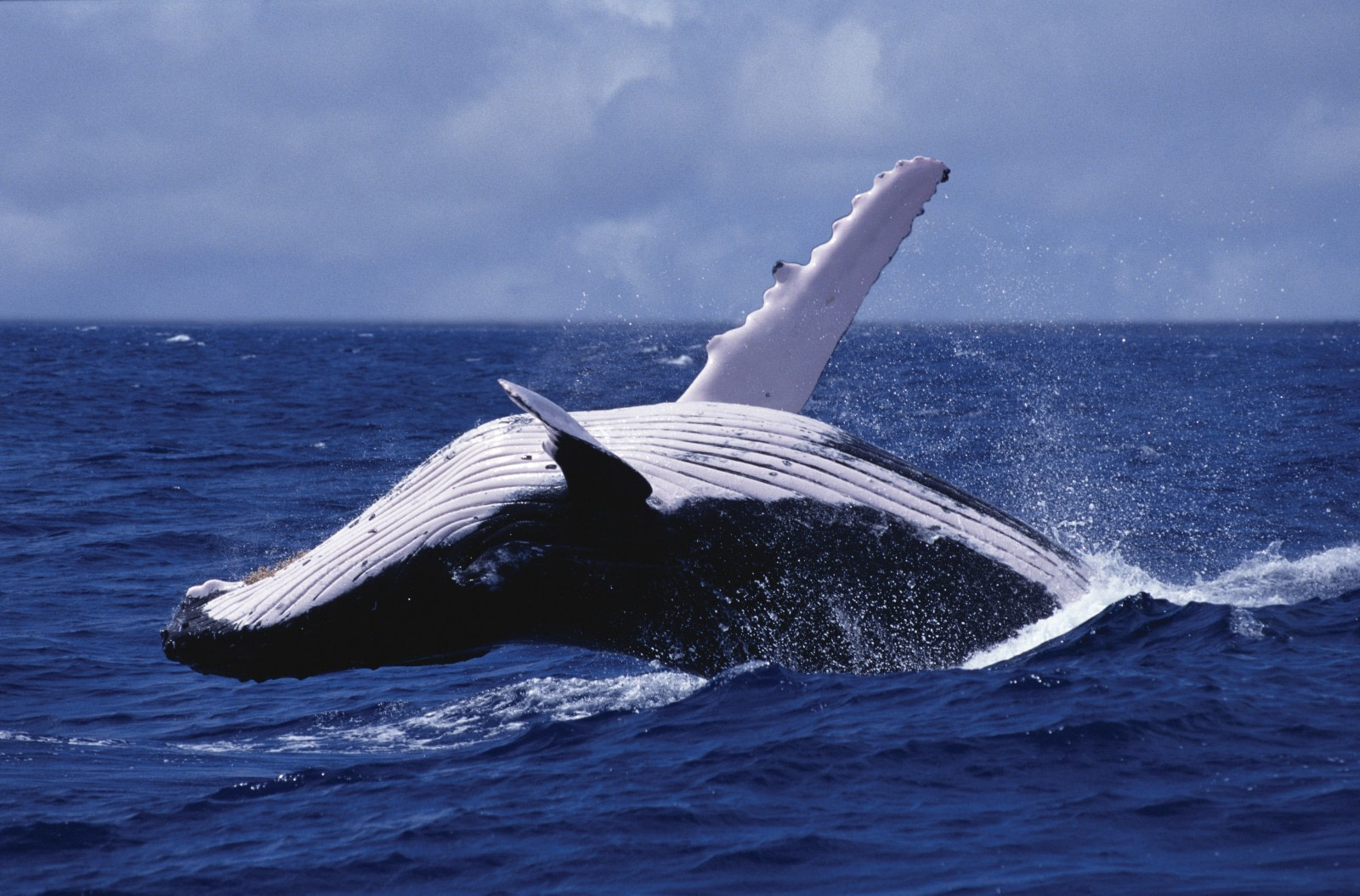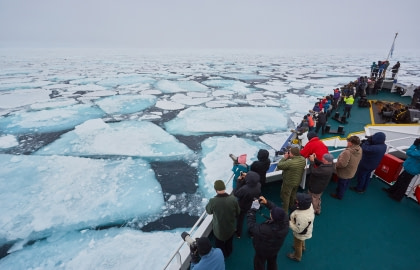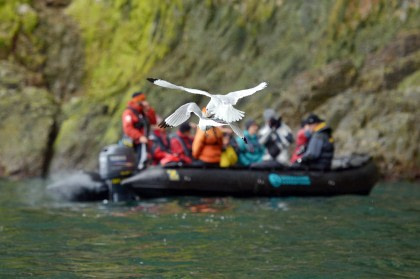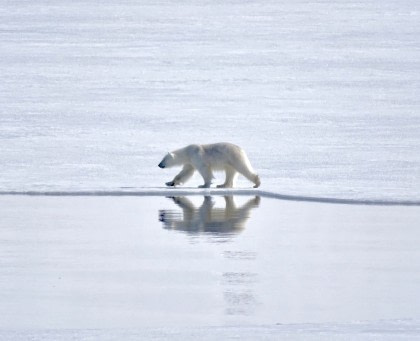Humpback whales sing for food, not entertainment
People worldwide have been captivated by the sound of humpback whales singing, and this is something that Greenland expedition participants often ask about. However, scientists have recently discovered that the purpose of part of their musical ways appear to have much less to do with entertaining anyone than it does with helping them locate their next meal.
How do whales utilize singing?
Marine biologists have long believed that humpback whales sing as a form of communication. This can vary from helping them during mating season to informing other whales about directional changes or weather conditions. Interestingly, a research team from Syracuse University was able to use some footage that was captured by a drone to determine that humpback whales work together to corral prey near the surface.
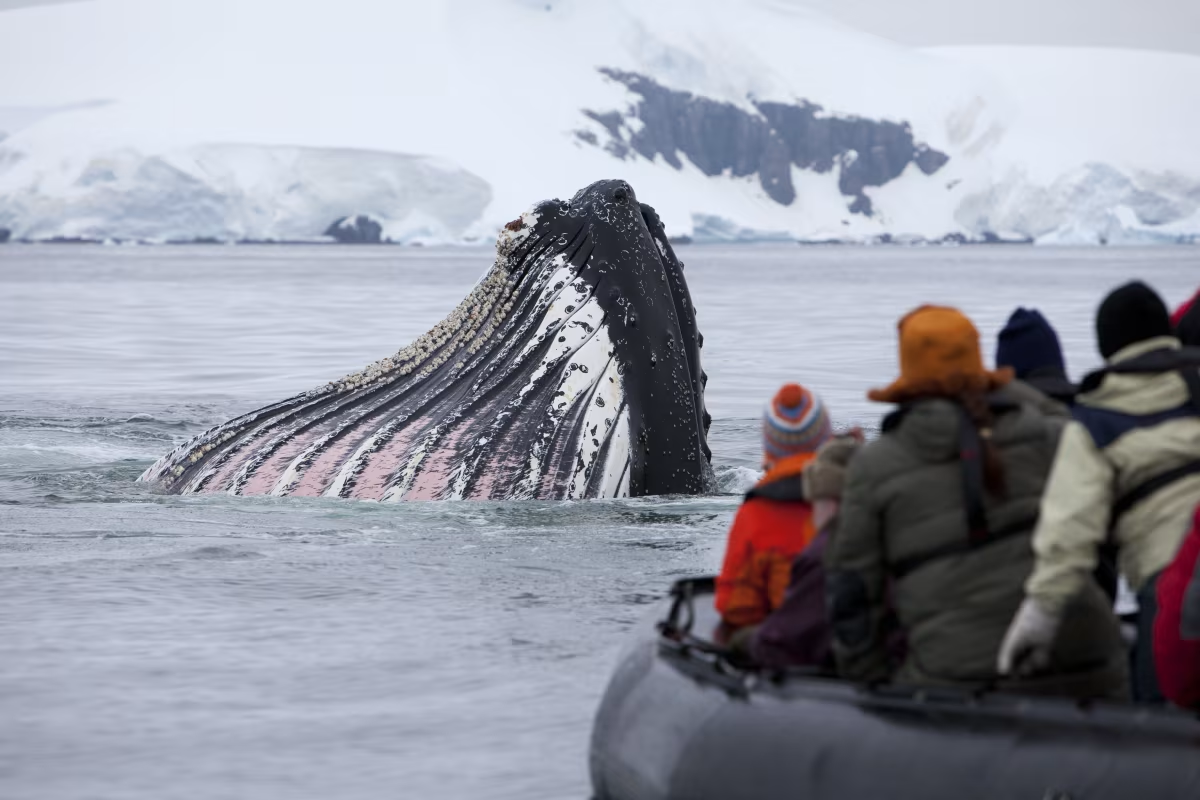
Picture by Troels Jacobsen
How does the singing impact their intended prey?
It seems likely that whales typically use their singing for food technique in the dark and when they are having a difficult time finding enough sustenance. Susan Parks, who is a representative of Syracuse University and the assistant professor of biology referenced a “tick-tock” noise that hunting whale partners make to remain connected while searching for food at night.
During the night, eel-like sand lances are the humpback whales prey of choice, and research indicates that they spend a lot of time buried inside the ocean floor. This is a good survival tactic, but there is one significant problem: sand lances will often come out of hiding in response to the noises that whales make. Although this might just be nothing more than natural curiosity, it is definitely something that this particular species needs to evolve away from if they are going to continue to thrive.
The downside of this approach
Singing to find dinner is apparently a very viable technique, but it also exposes the hunting location of each whale to any other whales from outside their pod. Evidence even suggests that the whales from outside the specified pod will come closer to eavesdrop on the evening’s hunting activities. Unfortunately, this can lead to an overwhelming presence of humpback whales in one area, and it can quickly cause the available food resources to run out.
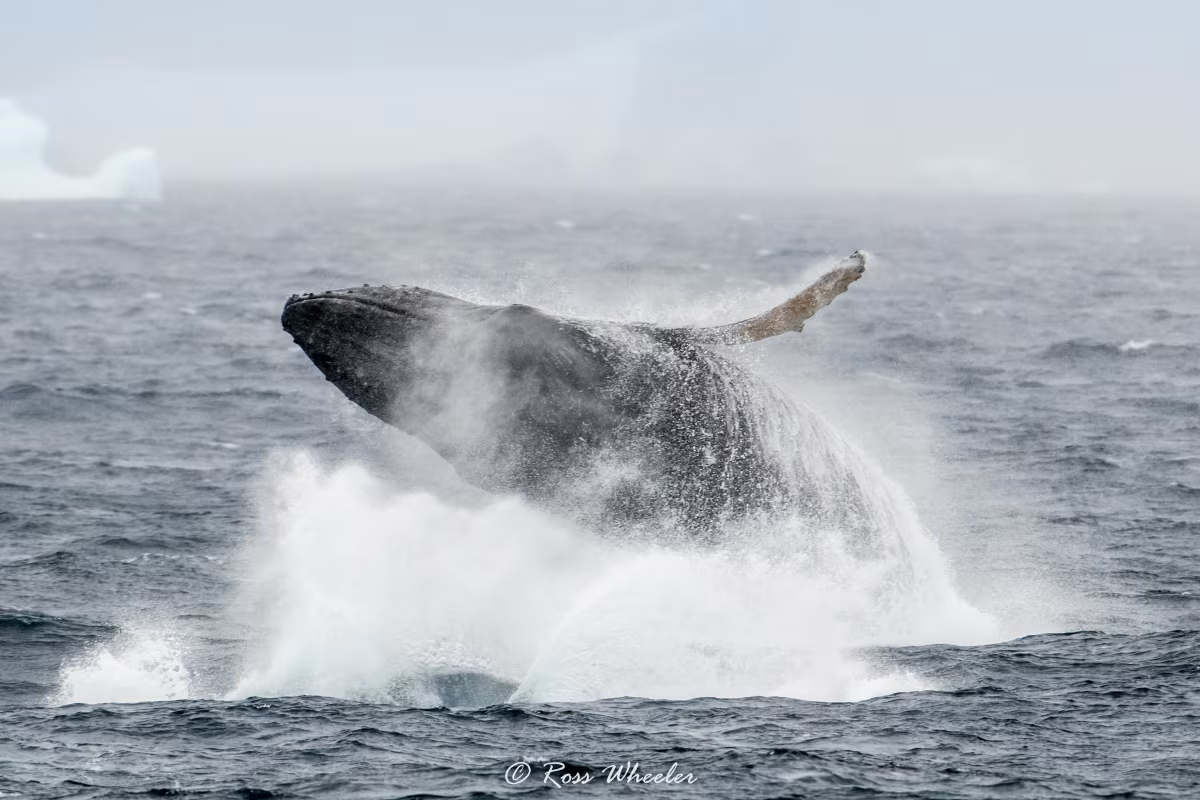
Picture by Ross Wheeler
How far can a whale be heard?
The “tick-tock” sound that is used for hunting at night is very different from their typical songs, and this is probably done in an effort to minimize the amount of attention that is captured from outside the hunting party. The normal call of a humpback whale can be heard from miles away, and they often make noises that sound similar to crying, howling and moaning. This sticks out even more because their songs will often last for hours. In other words, people who join an Arctic or Antarctic expedition have a solid chance of hearing one of these songs, and it is an extremely memorable experience.
How much food does a humpback whale consume?
An adult humpback whale weighs an estimated 70,000 pounds, so it needs a lot of food on a daily basis. This is especially true of the humpback whales living in Arctic waters because they need to be prepared for the long migratory journey that take each year so that they can breed in tropical waters. The average whale that can be spotted from an Arctic expedition ship will look for approximately two tons of food per day, and this process is complicated by the fact that they primarily exist on a diet of small fish and tiny shrimp.
The massive food needs of each whale in the pod can make it necessary for groups ranging from four to 20 to hunt together if they are going to remain satiated during difficult hunting conditions. When this technique is employed near the surface of the water, it is referred to as bubble net feeding. Although the latest information regarding singing and targeting prey near the bottom of the ocean is relatively new, it is probably simply a variation on their more well-known hunting methods. Ultimately, this vocalization of their food needs should make it even easier for humans to locate whales while cruising through the ocean during an Antarctica cruise or an Arctic expedition.
